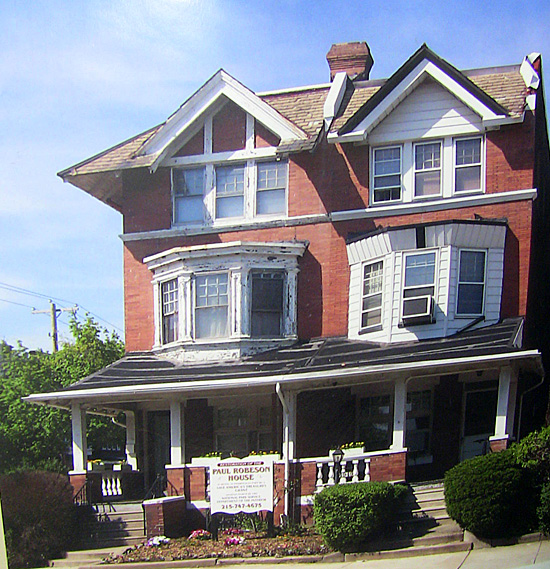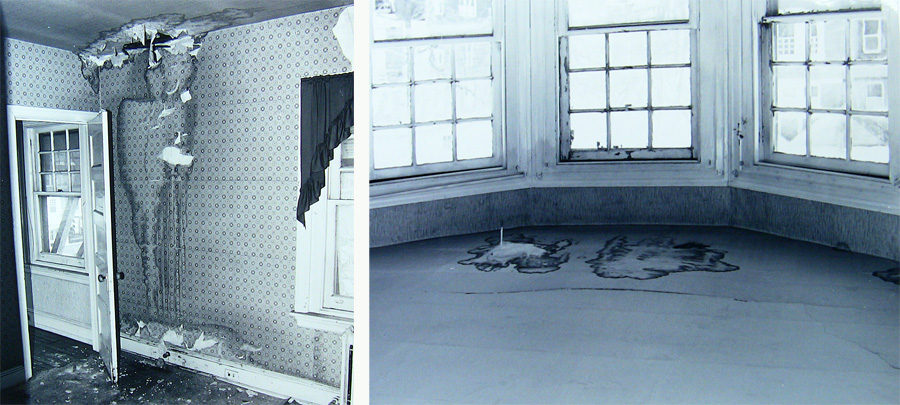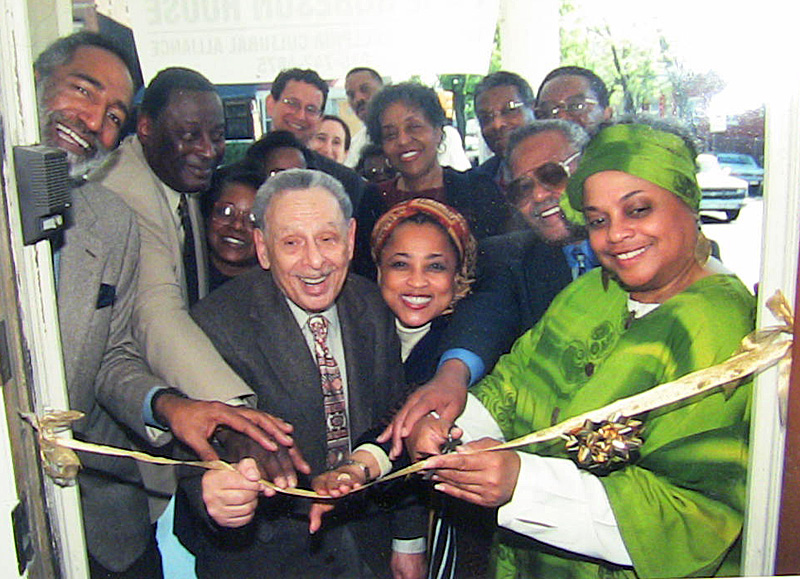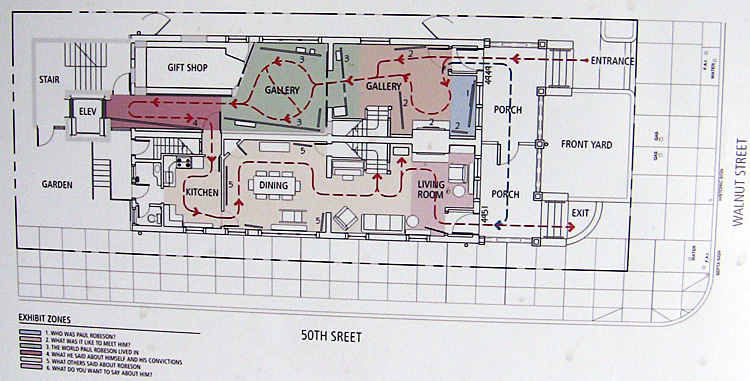By the time the West Philadelphia Cultural Alliance (WPCA) set its eyes on the twin rowhouse at 4951 Walnut Street, it was in horrid condition. No longer was its wooden porch the warm spot where Paul Robeson had sat for some fresh air and to watch neighbors pass by.

About the only thing left of those days were the rosebushes that his sister Marian Forsythe had planted in the small front yard of the brick home. Robeson spent the last 10 years of his life here with his sister. He died in 1976, and she a year later. Marian left the house to her daughter Paulina.
The WPCA, formed in 1984 as a community-oriented cultural organization, was looking for a place to move its administrative offices and was told that the Paul Robeson House might be available. The group bought both the Robeson house and the twin next door, which had been owner-occupied.
The alliance had fundraisers, and acquired a bank loan and other means to buy the houses.
The Robeson House had been vacant for more than a dozen years by the time the WPCA purchased it in 1994. It was empty but squatters had settled in, and when they were forced to leave, they left a shell behind, Frances P. Aulston, then-executive director of the Paul Robeson House and the WPCA, said in an interview with savingplaces.org in 2012.
The structure was one of three twin rowhouses designed by Philadelphia architect E. Allen Wilson in 1907, and constructed in 1911. He was one of the first architects to build modest homes with such amenities as indoor plumbing, a back staircase leading to the kitchen and hardwood floors.
In 1998, the alliance embarked on a capital campaign to raise money to restore the house, create interpretive exhibits, and supply new public facilities and offices for the WPCA. The plan called for restoring the house as it looked when Robeson lived there. The house next door was to be used for galleries and a gift shop, with conference rooms on the second floor (those renovations are pending).
Funding for the project did not come easily. The WPCA was able to obtain federal, state and local grants, along with funding from historical commissions and foundations.

With support from then-U.S. Rep. Chaka Fattah and then- Sens. Arlen Specter and Rick Santorum, the alliance in 2002 received an initial grant of $200,000 from the Save America’s Treasures initiative. The money was used to create a master plan and schematic designs, and hire researchers and architects.
To determine the feasibility of renovating the house, the alliance partnered with graduate students at the University of Pennsylvania to conduct a study on whether there was community support for the renovation and potential use of the home as a cultural spot.
In 2005, the WPCA received a grant for $100,000 from Save America, the National Trust for Historic Preservation and HGTV, which planned to feature the house on one of its shows. In 2008, the Pew Center for Arts and Heritage awarded a grant of $100,000.

The house needed a major restoration from the ground up – from new electrical wiring to new plumbing to a new roof. The foundation had to be shored up, and the windows were restored.
During the renovation, a large square of the original wallpaper was uncovered behind a mirror that Forsythe had hung on the wall years before and that had somehow remained in place. The wallpaper was framed and left in place as a reminder of what the walls once looked like.
The restoration on the Robeson House was completed in 2015. Some parts of the project still require work.
